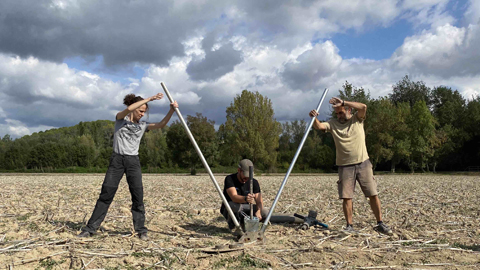New archaeological finds at La Draga
The archaeological team working on the Neolithic site of La Draga recently began to work on the western side of the Banyoles Lake. The works will contribute to the study of the palaeoenvironmental and geomorphological reconstruction and evolution of the lake, and to record the dynamics of this prehistoric settlement.

The work began recently forms part of the new four-year research project on archaeological and palaeontological matter (2022-2025) focusing on the Neolithic settlement of La Draga, funded by the Banyoles County Archaeological Museum. It forms part of a greater project entitled "La Draga (Banyoles) and the Neolithisation of the NE of Catalonia. Training and Dynamics of Occupying Open-Air Settlements", coordinated by the Universitat Autònoma de Barcelona (with the involvement of lecturer Raquel Piqué), the Archaeological Museum of Catalonia (Antoni Palomo), and the Spanish Higher Research Council - Institució Milà i Fontanals (Xavier Terradas).
The work will focus on the western bank of the lake, where archaeological and geophysical digs will be conducted in three different phases: palaeological surveys to characterise the stratigraphy and geomorphology of the area, electromagnetic prospecting, and confirmation of the results of the electromagnetic prospecting through archaeological surveys.
The first tasks were directed by Jordi Revelles and Francesc Burjachs, researchers from the Institut Català de Paleoecologia Humana i Evolució Social (IPHES), and are the continuation of a set of first surveys which were already conducted one decade ago with the aim of reconstructing the evolution occurring on the banks of the lake during the past millenia. The results at that moment made it possible to determine that during the Late Neolitic (ca. 4700 BCE) there was a riverbank forest and different levels of fires and cultivation of cereals, which made researchers suspect that there was a settlement nearby.
As a whole, the project has made it possible to answer one of its main objectives: the reconstruction of the palaeoenvironmental and geomorphological evolution of the Banyoles Lake, and the recording of this prehistoric settlement. The lacustrine basin of the Banyoles Lake offers the possibility of conducting interdisciplinary projects that combine archaeological and palaeoecological data thanks to its exceptional sedimentary registry of the recent Quaternary Period.